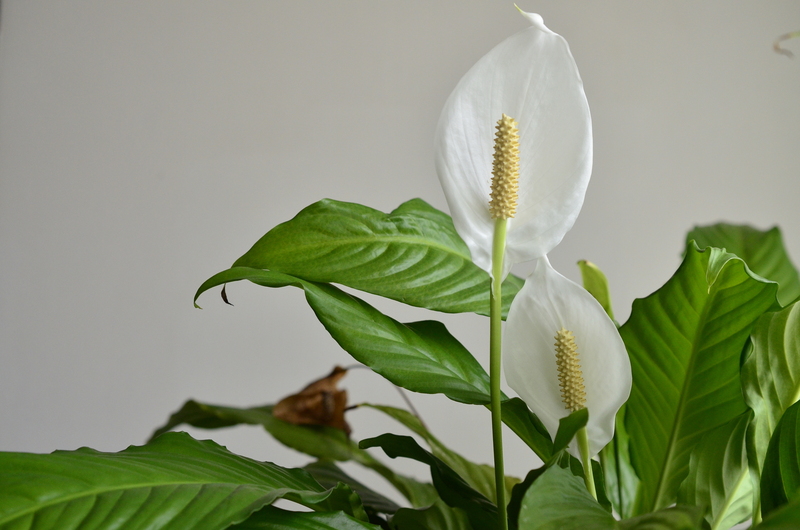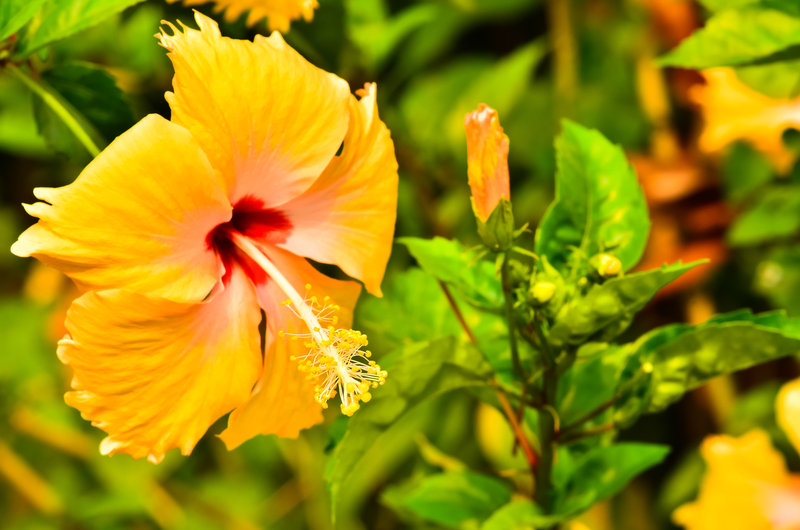Creating a Personal Sanctuary with Your Herb Garden
Posted on 18/09/2025
Creating a Personal Sanctuary with Your Herb Garden
Are you searching for a peaceful personal retreat right at home? Imagine stepping into your backyard or balcony and being greeted by fragrant herbs, vibrant foliage, and a sense of serenity. Creating a personal sanctuary with your herb garden not only elevates your home's aesthetic but also improves wellbeing, encourages sustainability, and offers a unique hobby. This ultimate guide will walk you through transforming any space into your own herbaceous oasis.

Why Cultivate an Herb Garden for Your Sanctuary?
An herb garden sanctuary isn't just about growing basil and mint--it's about mindful living. Here are some key benefits:
- Calm and Relaxation: The soothing scents of rosemary, lavender, and chamomile naturally reduce stress and support mindfulness.
- Healthier Lifestyle: Fresh herbs offer culinary, medicinal, and aromatic advantages for well-being.
- Sustainability: Growing your own food reduces your carbon footprint and dependence on grocery store supply chains.
- Personal Fulfillment: Gardening is a fulfilling hobby that fosters creativity and a deep connection to nature.
- Multi-Functional Spaces: Herb gardens can beautify patios, balconies, and windowsills, turning them into tranquil retreats.
Setting Your Intentions: What Does Your Sanctuary Mean to You?
Before digging in, reflect on your sanctuary's purpose. Would you like a meditative aromatherapy nook, a culinary resource, or a lush escape filled with pollinators and birds? Understanding how you want to use your space will inform the design and herb selections.
Planning Your Personal Herb Garden Sanctuary
Choosing the Right Location
Selecting the right spot is vital. Your herb garden should offer comfort, sunlight, and accessibility.
- Sunlight: Most herbs need 6-8 hours of sunlight per day. A bright windowsill, balcony, or south-facing garden bed works best.
- Shelter and Privacy: Tall planters, trellises, or companion shrubs can block wind and create a hidden refuge.
- Accessibility: Place your sanctuary somewhere you can easily access daily for harvesting, relaxing, or simply enjoying the space.
Designing Your Herb Retreat
Whether you have an expansive yard or a city balcony, thoughtful layout maximizes your sanctuary's tranquility. Consider these elements:
- Paths and Paving: Stepping stones or gravel walkways invite you to wander and tend your herbs.
- Seating: A bench, hammock, or small bistro set turns your garden into a restful escape.
- Water Feature: A small fountain or birdbath adds soothing sounds and attracts wildlife.
- Vertical Elements: Trellises, wall planters, and hanging pots make ideal use of small spaces.
Key Design Principles for a Harmonious Sanctuary
- Cohesion: Use stones, pots, or furniture that share a similar color palette or style.
- Fragrance: Situate aromatic herbs (like thyme or mint) near seating or pathways to enhance sensory enjoyment.
- Biodiversity: Plant a variety of herbs to support pollinators and healthy growth.
- Flow: Arrange plantings for easy movement and sightlines, accentuating focal points with lush greenery.
Selecting Herbs for Your Personal Oasis
The heart of creating a private haven with herbs lies in your plant selection. Choose varieties that suit your climate, culinary preferences, and design goals.
Top Herbs for a Relaxing Sanctuary
- Lavender: A classic for calming, sleep-promoting fragrance; purple blooms invite butterflies.
- Rosemary: Evergreen, aromatic, and excellent for memory--a symbol of remembrance and clarity.
- Chamomile: Known for soothing teas and daisy-like flowers with gentle apple scent.
- Lemon Balm: Uplifting citrus notes and reliable growth; ideal for teas and mood-lifting moments.
- Mint: Spreads joy with invigorating scent and rapid growth. Great for mojitos and fresh summer teas.
- Thyme: Low-growing with tiny fragrant leaves, perfect beside walkways for sensory pleasure.
- Basil: Sweet, peppery aroma and delicious in food. Brightens any edible or ornamental arrangement.
- Sage: Soft, silvery leaves with wisdom symbolism and culinary appeal.
Herbs with Decorative and Functional Value
- Coriander (Cilantro): Lacy greenery and culinary vigor.
- Dill: Feathery, delicate texture and anise flavor, with pretty yellow blooms.
- Chives: Edible, drought-tolerant, with pretty purple flowers in spring.
- Oregano and Marjoram: Sun-lovers with small flowers, great for culinary blends.
Companion Planting Principles
Mixing different herbs together not only maximizes space but can also promote health and vigor. Many herbs deter garden pests, attract beneficial insects, or enhance the flavors of neighboring plants. For example, basil and tomatoes are a classic pair, while rosemary and sage thrive together in well-drained soil.
Practical Steps: Planting and Cultivation
Soil, Water, and Light Requirements
- Soil: Most herbs thrive in well-draining, slightly sandy soil enriched with compost.
- Water: While mint loves moist soil, rosemary and lavender prefer it dry. Group container plants by water needs.
- Light: Six to eight hours of direct sun yields the healthiest, most flavorful herbs.
Planting in Containers vs. In-Ground
- Containers: Ideal for patios and small spaces. Use pots with drainage holes; group herbs based on water/sun needs.
- Raised Beds: Offer easy access, improved drainage, and clear separation from surrounding grass or gardens.
- Ground Beds: Perfect for larger properties--can be formal (symmetrical) or wild and natural.
Maintenance for a Thriving Sanctuary Herb Garden
- Pruning: Harvest regularly to encourage bushiness and new growth.
- Watering: Water at the soil, not overhead, to avoid fungal issues.
- Mulching: Organic mulch (like bark chips) suppresses weeds and retains moisture.
- Fertilizing: Use organic compost once or twice a season--herbs need fewer nutrients than vegetables.
- Pest Management: Interplant flowers like calendula or nasturtium for veggie pest control without chemicals.
Personalizing Your Herb Garden Retreat
Adding Comforts and Artistic Flourishes
Turn your herb patch into a true escape with a bit of creativity:
- Garden Art: Weatherproof sculptures, wind chimes, or mosaic stepping stones reflect your personality.
- Lighting: Solar-powered lanterns, fairy lights, or candles for evening ambiance.
- Sound and Water: Add wind chimes, a tabletop fountain, or a small pond for soothing nature sounds.
- Texture and Shade: Mix feathery dill, plush mint, and sturdy sage for tactile pleasure. Add a pergola or an umbrella for midday comfort.
Mindful Spaces: Creating a Place for Relaxation
- Meditation Corner: Place a yoga mat or meditation cushion under the boughs of a scented herb trellis.
- Tea or Reading Nook: A small cafe table among your herbs is perfect for sipping herbal tea or reading a book.
- Wildlife Watching: Incorporate plants that attract butterflies, bees, and songbirds so your sanctuary buzzes with life.
Year-Round Enjoyment: Extending Your Herb Garden Sanctuary
Overwintering and Indoor Herb Gardening
- Hardy Herbs: Thyme, sage, and chives can handle mild winters outdoors.
- Indoor Herb Gardens: Portable containers allow you to bring a piece of your sanctuary inside during cold months.
- Grow Lights: LED grow lights ensure herbs receive enough light through the winter.
Seal your sanctuary with a sense of anticipation year-round by drying herbs for teas, crafts, and gifts.

Using Your Sanctuary: Recipes, Wellness, and Beyond
Harvesting, Preserving, and Enjoying Your Herbs
- Fresh Use: Harvest herbs in the morning for peak flavor to enliven salads, sauces, and teas.
- Drying and Freezing: Preserve surplus for year-round use in jars and containers.
- Homemade Treats: Create herbal teas, infused oils, vinegar, soaps, and salves.
- Wellness Rituals: Use lavender sachets to enhance sleep, chamomile tinctures for calm, or foot soaks for relaxation.
Herb Garden as a Wellness Retreat
- Aromatherapy: Crush basil, rosemary, or lemon balm between your fingers for instant stress relief.
- Mindful Gardening: The simple act of tending herbs--watering, pruning, smelling--calms the mind and boosts mood.
- Connection with Nature: Your sanctuary is a living, evolving space--a reminder to slow down and appreciate life's small joys.
Conclusion: Nurture Yourself with a Personal Sanctuary Herb Garden
No matter your space, lifestyle, or experience level, creating a personal sanctuary with an herb garden is a rewarding way to foster inner peace, physical health, and joyful creativity. Lean into your senses--touch, smell, taste, and sight--and let your garden become a living retreat that supports your wellbeing daily.
With careful planning, creative design, and a heart for nurturing, your herb garden sanctuary can be more than a collection of plants: it will become your cherished haven, one fragrant and tranquil moment at a time.
Ready to begin? Gather your favorite seeds or starter plants, dream up your perfect space, and start sowing serenity today!



